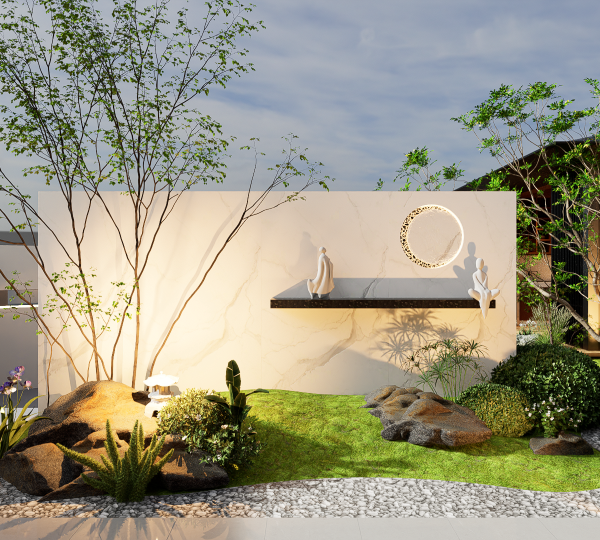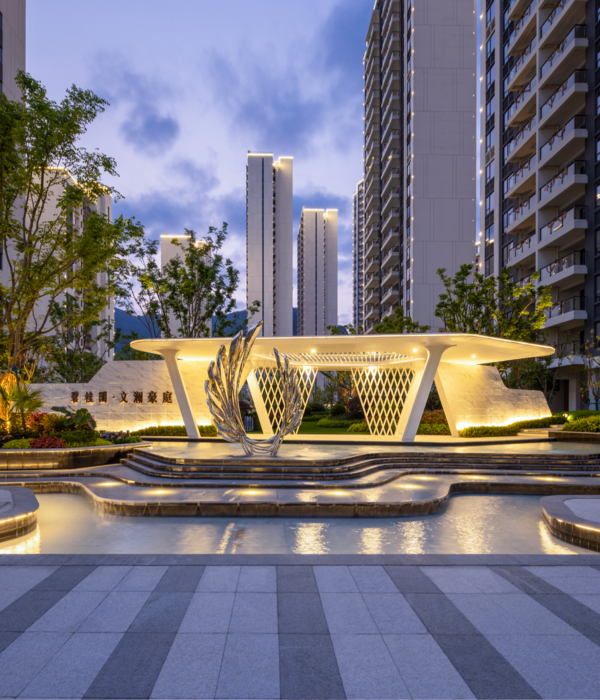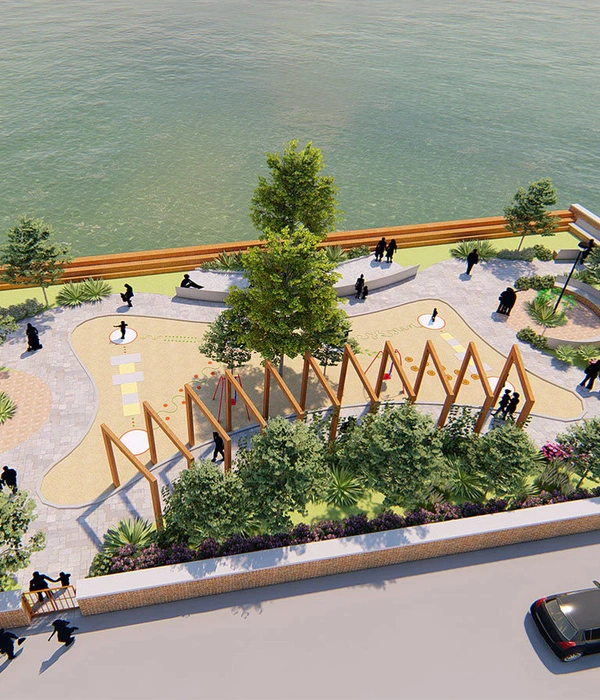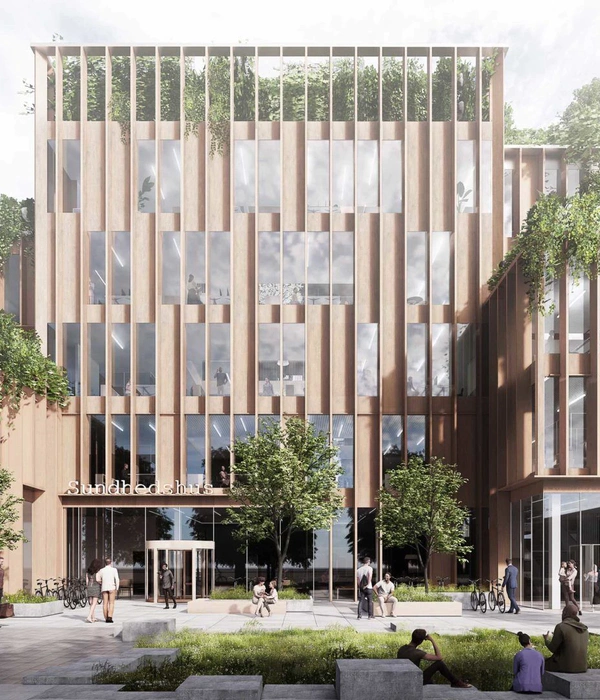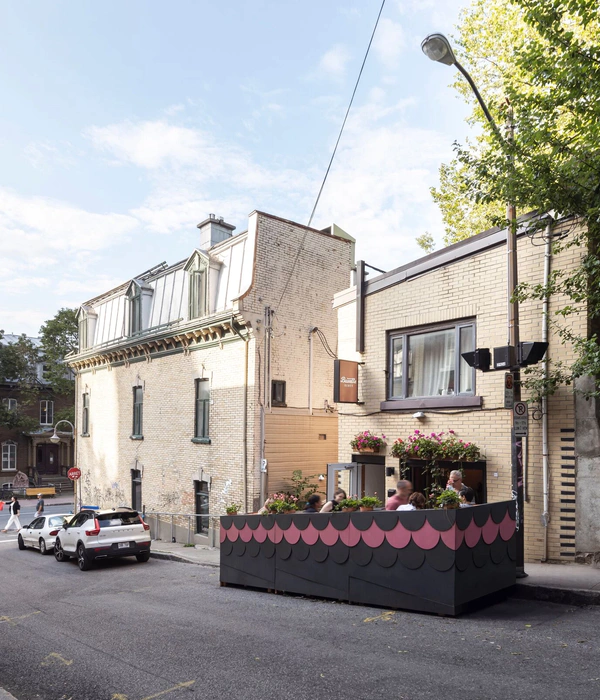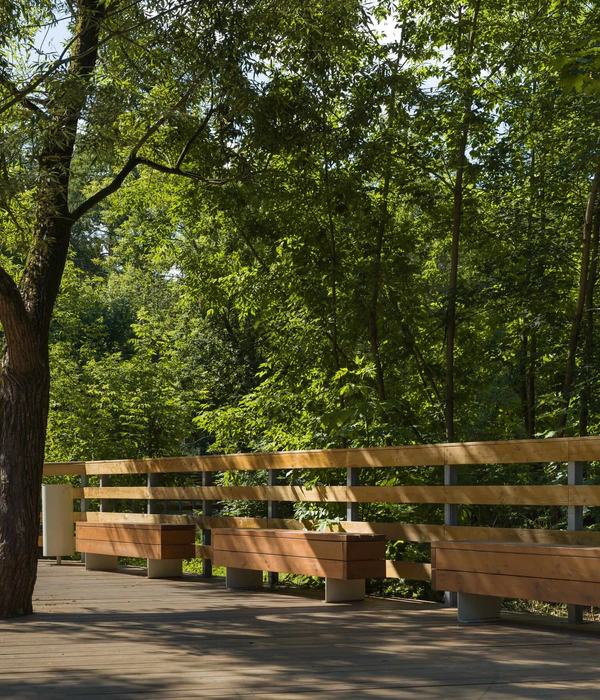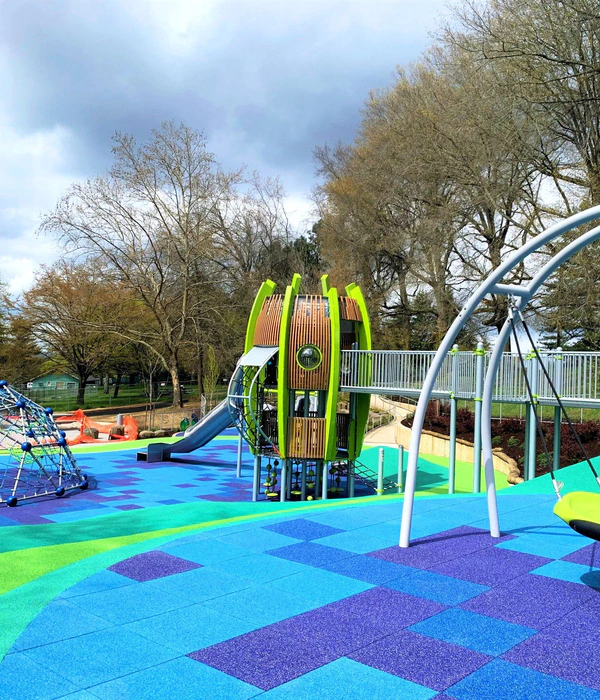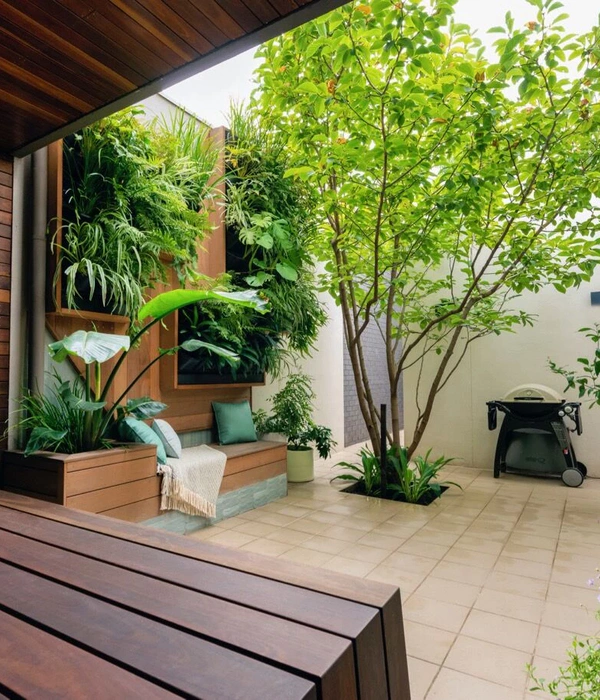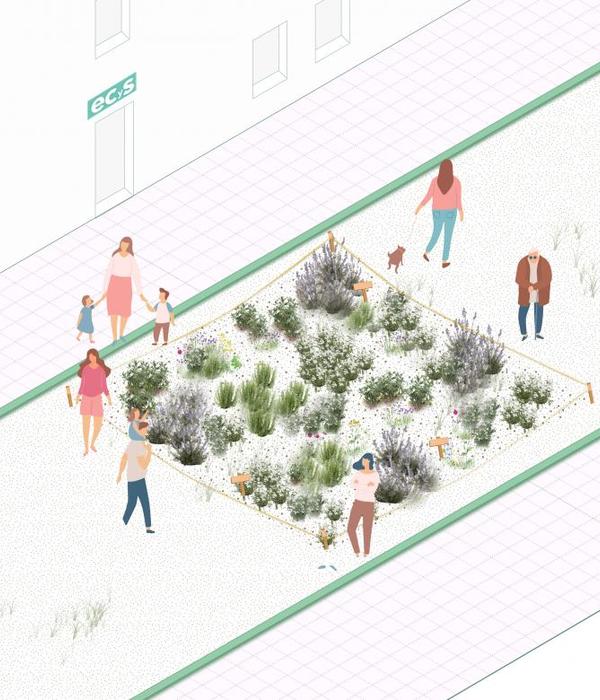Architects:Gets Architects
Area :600 m²
Year :2020
Photographs :Mario Wibowo
Manufacturers : Grohe, Panasonic, TotoGrohe
Principal Architects : Gerard Tambunan
Designer In Charge : Griselda V Chandra
Design Team : Reza Fadillah
Interior Styling : Diana Pardede
Structure : Haryadi Sukianto (+)
Interior Contractor : Lucia Pramita
City : East Jakarta
Country : Indonesia
A Meditative Entrance - Rumah RifBagus is a fulfilled dream house for a young family done by converting two dilapidated houses into a light-filled family abode. Located vis-a-vis the local elementary school in the East Jakarta neighborhood, noise reduction becomes the main concern of this dwelling. To overcome that, the required setback is designed as a buffer: using a tunnel-like hanging custom 3D calligraphy wall combined with a lush landscape in the entranceway. Its disposition then becomes prevalent throughout the whole entrance flow by not only creating texture but also serving as a meditative sequence for its inhabitants in a well-defined space. The entrance arrival is curated into a series of specific opportunities that may not be novel anymore: an entry porch, a private courtyard, and a niche entrance for a guest bedroom terrace in the pavilion. Yet a diagonal wall confidently protrudes to functionally become a public-private separator of those places after walking through a bold sequence in the entranceway. Whereas aesthetically the diagonal wall is instilling a character in a desirable manner. The wooden ground of the whole entrance area sits a spacious resort-like flow that feels both comfortable and functional, and those who make an entry seem to pick an unhurried atmosphere up on the porch with a mudroom-like function. Completed with a spacious bench, the foyer is served as a guest area for chit-chatting with acquaintances.
From the street, this house appears modest in its mass combination, materiality, and color. However, beneath the surface lies a series of built spaces designed to be distinctive in their function yet rich in experiences, especially in the combination with the natural elements. The house is split into two distinct volumes: a muted white horizontal upper rectangle mass with a modern colonnade facade and the lower mass that’s more dominated by the implication of the brown waffle structure canopy. The brown waffle as the main architectural feature is used throughout, binding the spaces and reinforcing a sense of flow. It is adding warmth through its natural color along the way. The spaces swell and expand through waffle pattern integration: it syncs with the interior ceiling, skylight, master balcony floor, and canopy structure. Tactical waffle placement in the interior also visually amplifies dimensions and frames natural light all over from the skylight above. Most notably, the sunlight that comes through the foliage amidst a plethora of surrounding trees. However, the rigid rectangular forms throughout the house are softened via the inclusion of greenery, the illusion of indoor-outdoor, and the double-height ceilings.
Rumah RifBagus interior space was created as a fully functional main home with an atmosphere of a vacation home. A relaxing environment that meets all the residents’ daily lifestyles. The aesthetics of the interior and exterior spaces of this modern tropical house are integrated by applying a similar color scheme to various materials, or by using the same materials in both indoor and outdoor spaces. External materials were raw, non-reflective, and predominantly pre-finished which require little maintenance. While upstairs, minimalist adaptations that mix with the formidable brown waffle ceilings and light brown wooden texture in the furniture both add visual interest to the bare white walls in the sleeping quarters.
Renovated Abode - The challenge in Rumah RifBagus was transforming the traditional characteristic houses with typical layouts into a more pragmatic home for a family of six and a pavilion for guests and other family-friendly amenities. The existing site consists of two separated old houses with different sizes and ratios that needed to be stitched together. Given the main concern of this young family is to create a flexible space to accommodate family gatherings, the mass is transformed and combined into two long masses with a sense of unity. The original structure and a few parts of the house were respectfully upgraded and restored with a new openness. Altogether, this house includes living and dining spaces, a study room, a music and cinema room, a kitchen one master bedroom, and a bathroom with four children's bedrooms with two shared bathrooms. The backyard is fully utilized as a swimming pool that flows into the courtyard as an oasis of the house. Programmatic requirements are zoned for an efficient structure and adjacencies.
The centrally located courtyard mediates between the main house and the pavilion as an interstitial space between the two. The pavilion—taking formal qualities from the main house—reads as a separate volume. Yet, flexible options for opening and closing living areas with glass doors make for an immersive connection with the pool, courtyard, and open skies and address the need to extend spaces. The pavilion is executed to activate the space as a guest bedroom and bathroom with a prayer room to visit daily. The monumental energy of the two-story masses contrasts with the reflection and soft sound from the water. A sophisticated rawness is celebrated throughout on muted surfaces, which are provided by the changing dance of light, shadow, and reflection. An exuberance of living radiates from the connection of those spaces, whether fully open or as discrete spaces. Offering a serene sanctuary, Rumah RifBagus is inspired to naturally scope as a family abode.
{{item.text_origin}}


